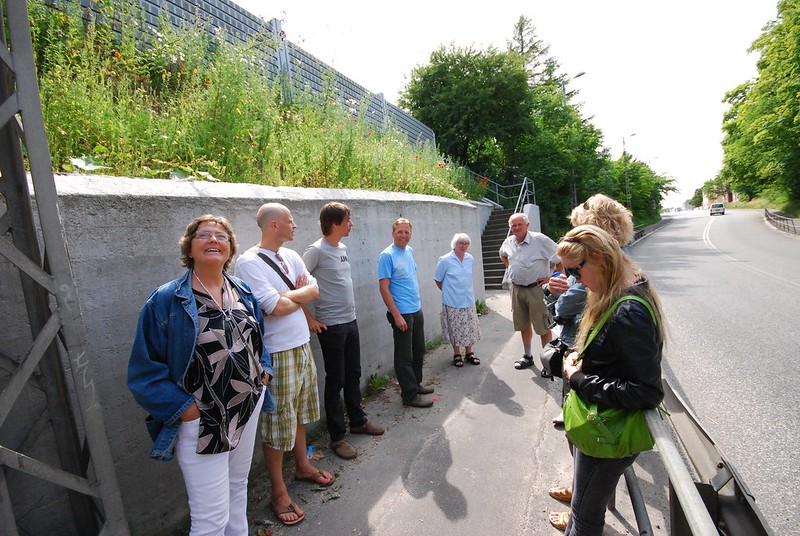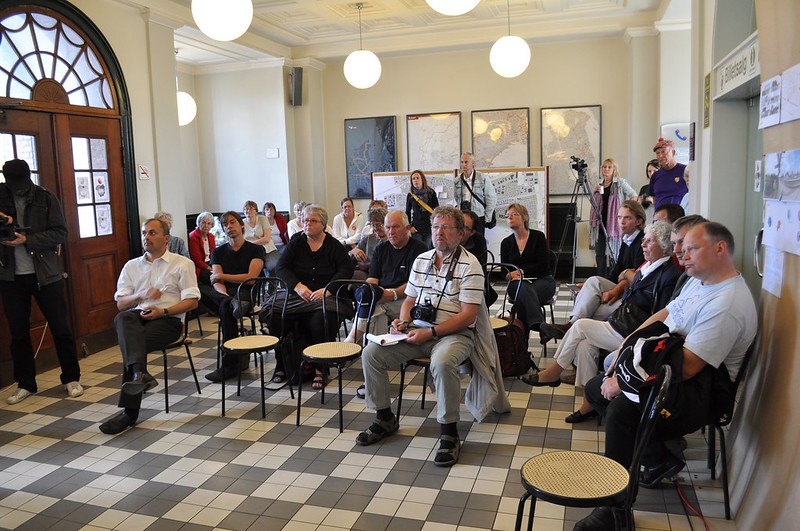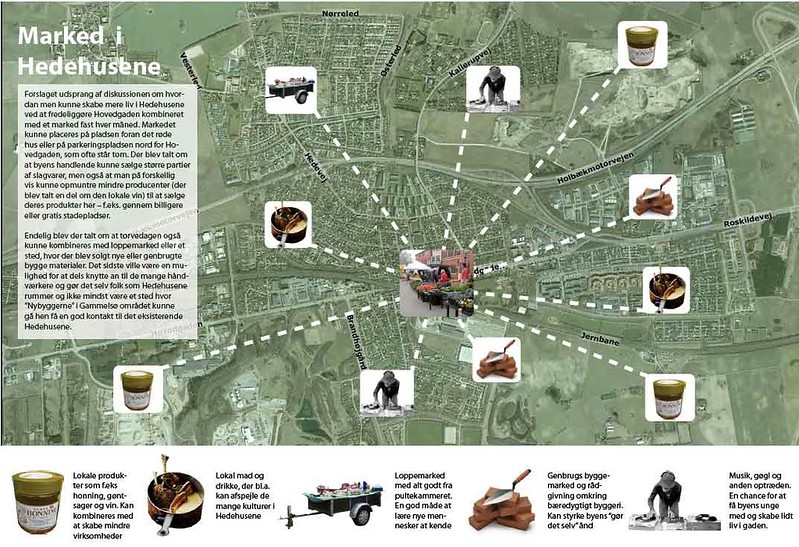The Project “Sensing Hedehusene” was not a Supertanker project but by the UK mapping artist Christian Nold. We were engaged in a parallel participatory process that should ensure, that the results were relevant locally. That part was very important since it resulted in the seed for a local offshoot: a monthly market that began the year after.

In short the project placed a number of sensors that measured pollution and noise – and had three buttons that made it possible to vote.

The results of the pollution and noise measurings where shown as colours on a big balloon.

The technology did not really catch on locally but all the buzz created by involving the local mayor and important persons from the culture industry in Copenhagen created a “critical mass” of local people that started discussing the future og the small community.

And the outcome of that discussion was to work for 2 ideas: a local market – this idea was made real the year after in 2010 and is a good example of a local offshoot :

The second idea was to create a local place to meet in the old train station – which is slowly becoming a reality:

The whole process – both the part run by the artist and the involvement of local people is documented on this website (in Danish)
See a short video here – both in English and Danish















